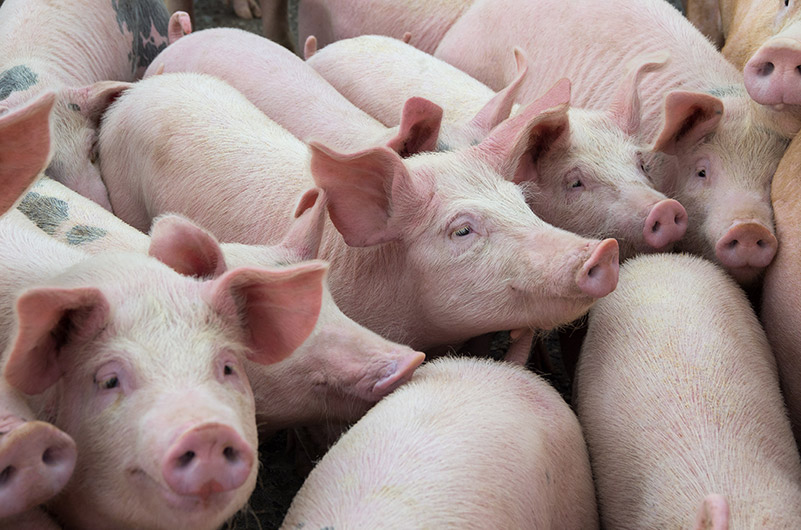Section 1 | Biosecurity
Industry
Page 04 /
What’s Covered in the Standard
When the Standard references direct routes of contamination, this refers to passing of infection to healthy pigs from pig-to-pig contact, or through semen or embryos. Whenever you are bringing in animals, semen, or embryos to your herd, it is vital you know the health status of its source — not only the diseases present on the source farm/region/province/country, but also the biosecurity and management practices employed.
See the Standard for a complete explanation of biosecurity and direct routes of contamination.
Any people, vehicles, meat products or other animals can introduce disease!
The Standard: Biosecurity and indirect routes of contamination
The indirect route of contamination involves introduction of disease to your premises through things that are not pigs, semen, or embryos, such as:
- Trucks (transport, deadstock) coming onto or leaving your premises
- People
- Aerosols (particles suspended in the air)
- Meat products:
- Dry or cured
- Fresh
- Pests, such as:
- Rodents
- Birds
- Insects
- Domestic animals, such as:
- Dogs
- Cats
- Poultry
- Wildlife, such as:
- Feral pigs (a growing concern in Ontario)
- Deer/elk
- Inanimate objects/fomites:
- Tools
- Equipment
- Supplies (such as needles)
- Feed and bedding
- Water
- Medicines and medical equipment
- Manure and other waste

Source: ACER Consulting Ltd.
Basically, anything that an infectious pathogen can live in or travel on that could come into contact with the pigs in your herd is at risk for infection.
See the Standard for a detailed explanation on what to do and how to manage your risk.
The Standard: On-farm animal health management and regional considerations
How you manage the animals on your farm can play a big role in how disease is spread. It goes without saying that sick animals are a major source of infection for the healthy animals on your farm. Practice care to ensure they are managed separately from healthy animals.
Another important health management strategy to prevent disease is to ensure your herd is adequately immunized through appropriate vaccination, a key animal health tool. This is like insurance against disease outbreak and spread.
